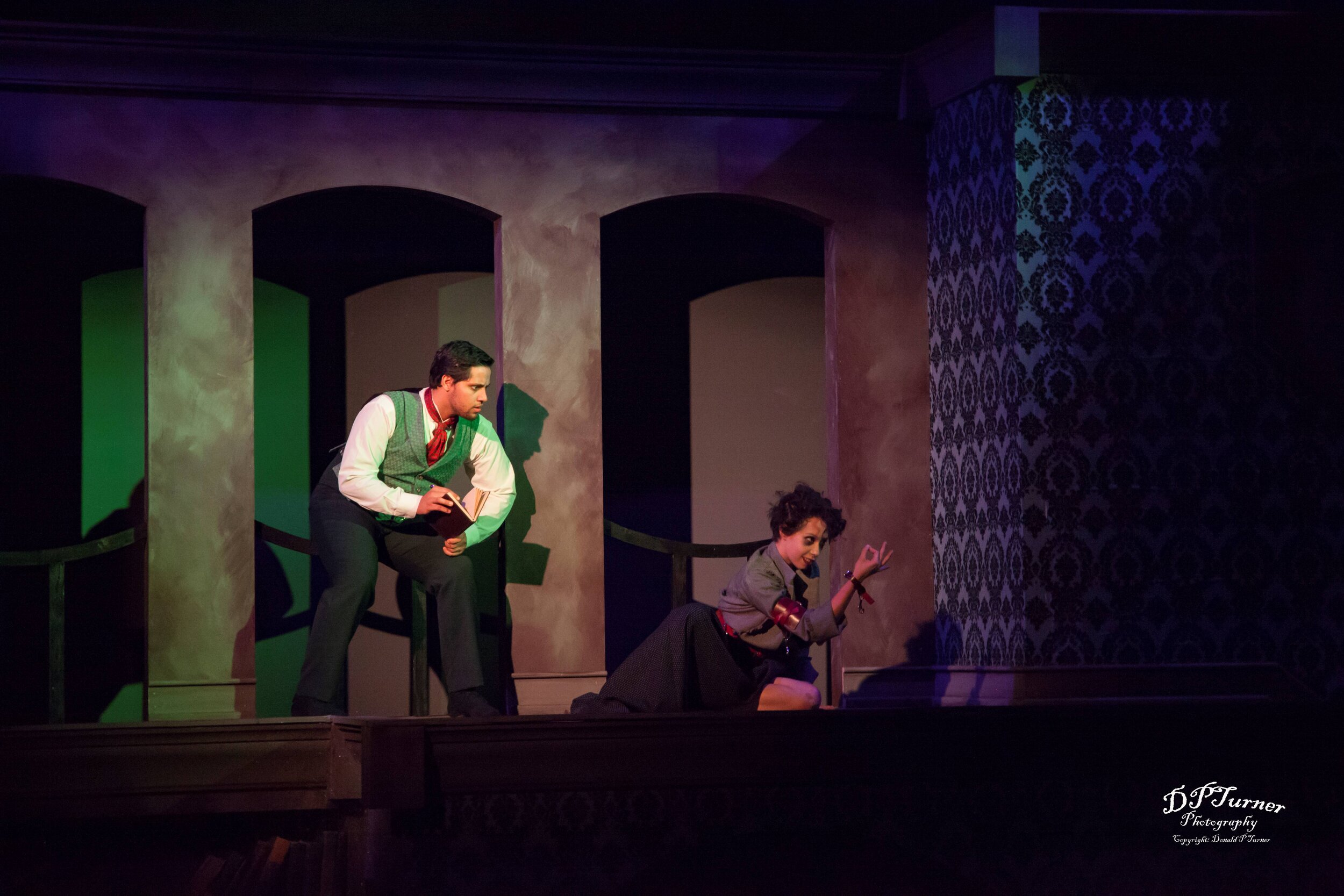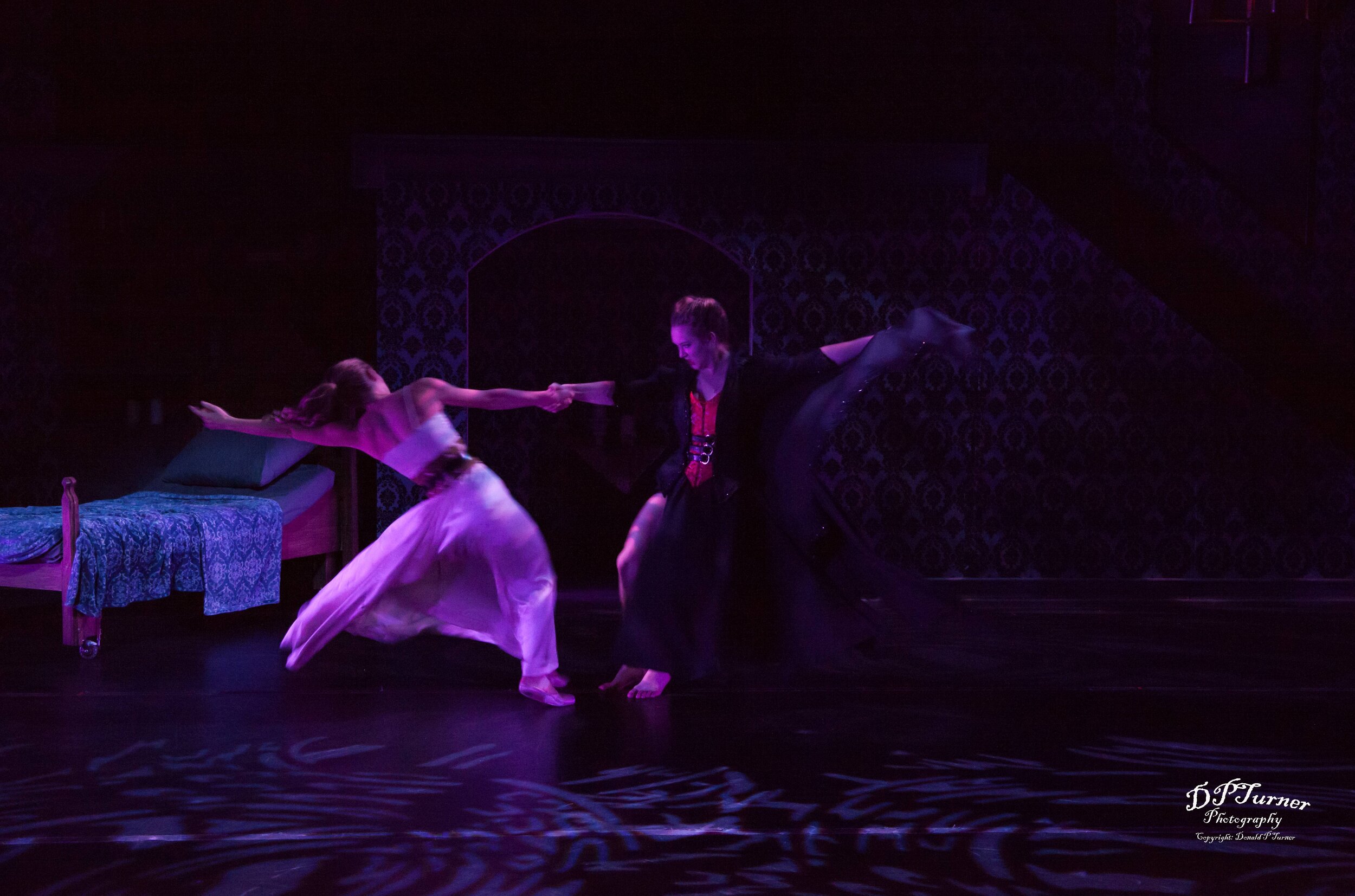
“Hidden in the world — in the dark creases of books, in the swirl of ink on innocent pages — hidden there are wild and mysterious things.”
— from Steven Dietz script

Dracula dances with Jonathan Harker

Seward, Harker, Mina, and Van Helsing mourn the death of Lucy

Seward evaluates Renfield

Dracula seduces Mina

Dracula leads the Undead

Harker is pursued by the Undead
Dracula: The Legend in Motion
Director/Choreographer: Jennifer Deckert
Music composition/performance: Seán Warren Stone
Dramaturgy: Patrick Konesko
Scenic Design: Casey Kearns
Costume Design: Lee Hodgson
Lighting Design: Jason Banks
Production Stage Manager: Drew Jaussaud
Approach:
Dracula: The Legend in Motion was a collaborative narrative ballet adaptation of Bram Stoker’s classic story. I joined the production team as dramaturg and acting coach seven months prior to the opening of the show. Our goal was to create a visually compelling version of Dracula, with all original music, that would be re-framed around casting a female-identifying Dracula. Our secondary goal was to build the production in such a way as to facilitate touring it around Wyoming. Ultimately, we made this production into a Halloween event, with accompanying costume and blood drive events.
Dracula is a book of significant size and complexity, with a huge number of locations. As dramaturg, my primary job was to help define our narrative parameters in a way that would allow us to clearly communicate the central narrative elements without the benefit of text. I began this process by building a side-by-side comparison of all of the prominent Dracula adaptations I could find, with a focus on theatre and dance presentations. I recorded the primary narrative events for each of these adaptions and charted them against the novel itself. This allowed me to present the director/choreographer with a list of the events that appeared in every surveyed version, the events that are fairly consistent throughout adaptions, and those episodes that generally get ignored completely. This allowed the choreographer to select and order events with a much more comprehensive view. Once we decided on the events and order, I made a scene outline with characters, synopsis, and key considerations/notes so that each designer and every performer had a quick point of reference while working.
As acting coach, my job was to help dancers create and embody compelling characters as well as helping them communicate the complexity and nuance of the story without having the luxury of text. First, I attended auditions, where I gave acting-style direction to performers and helped evaluate the range of each dancer in regards to characterization. After auditions, I attended rehearsals regularly to lead acting exercises, talk about acting theory, and give notes to both principal characters and chorus. In this capacity I also helped shape scenes to match the emotional and thematic structure established during the initial conceptualization of the project.
Dramaturgy Note:
Few figures have haunted our cultural imaginations, and our nightmares, so profoundly as that of Dracula. From the cruel reality of 15th century Romania under the brutality of Vlad the Impaler, to the iconic movie performance by Bela Lugosi, to our current fascination with the supernatural in media of all types, Dracula has been a constant, looming, presence in western literature since Bram Stoker first introduced him in 1897.
Each time Dracula is evoked, his character is revised and adapted to meet the particular needs, and fears, of the current cultural moment. There is something in the combination of mystery and danger, of violence and seduction, of shadows in the night and the glint of red blood on white teeth that always finds a way of speaking to us. Perhaps it is the natural byproduct of modern life; the more our science and technology shelter us from the spiritual forces that have haunted civilization since the beginning of time, the more that voice whispers from the dark recesses of our brains, "what if?"
Our version of this story begins with the tearful farewell of young lovers Harker & Mina before following him on his journey to the mysterious land of Transylvania. As Harker struggles against superstitious villagers and the evil intentions of his host, we explore the madness of Renfield alongside the stoic Doctor Seward. By the end of Act I, Dracula has arrived in London and has put Lucy under his thrall.
Act II begins with Lucy's descent into darkness, the return of Harker, and the arrival of much needed aid in the form of Professor Van Helsing. As tragedy strikes the group, Renfield finally succumbs to Dracula's charm and menace. Lucy terrorizes London and, under Van Helsing's guidance, the mourners become hunters. Mina, left behind, is seduced by Dracula - the discovery of which ignites a desperate hunt that can only end in battle with the most fearsome of ancient evils.
Come and join us as we leave the rational world behind to plumb the depths of superstition and shadow. In the words of Van Helsing, “I want you to believe … to believe in things you cannot.”